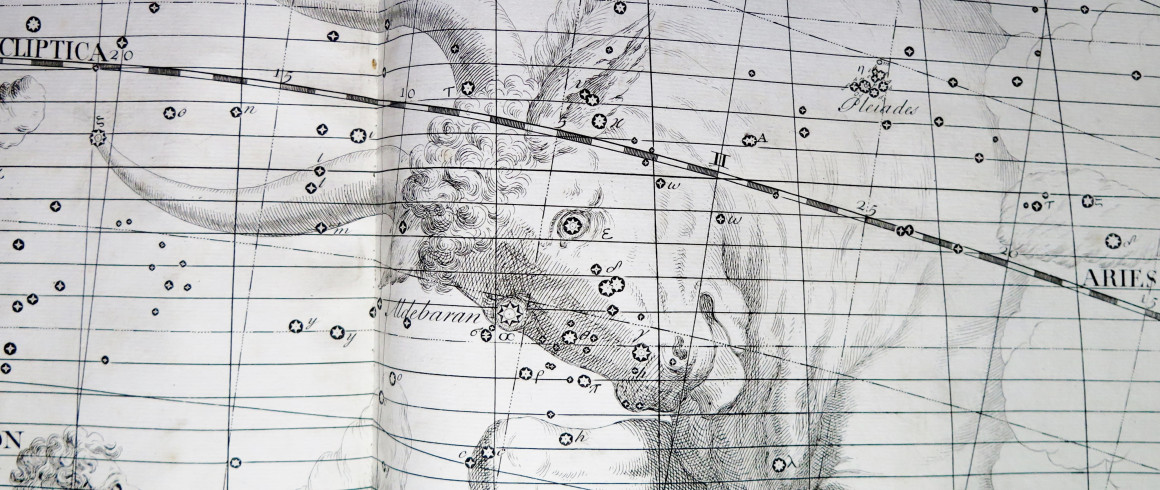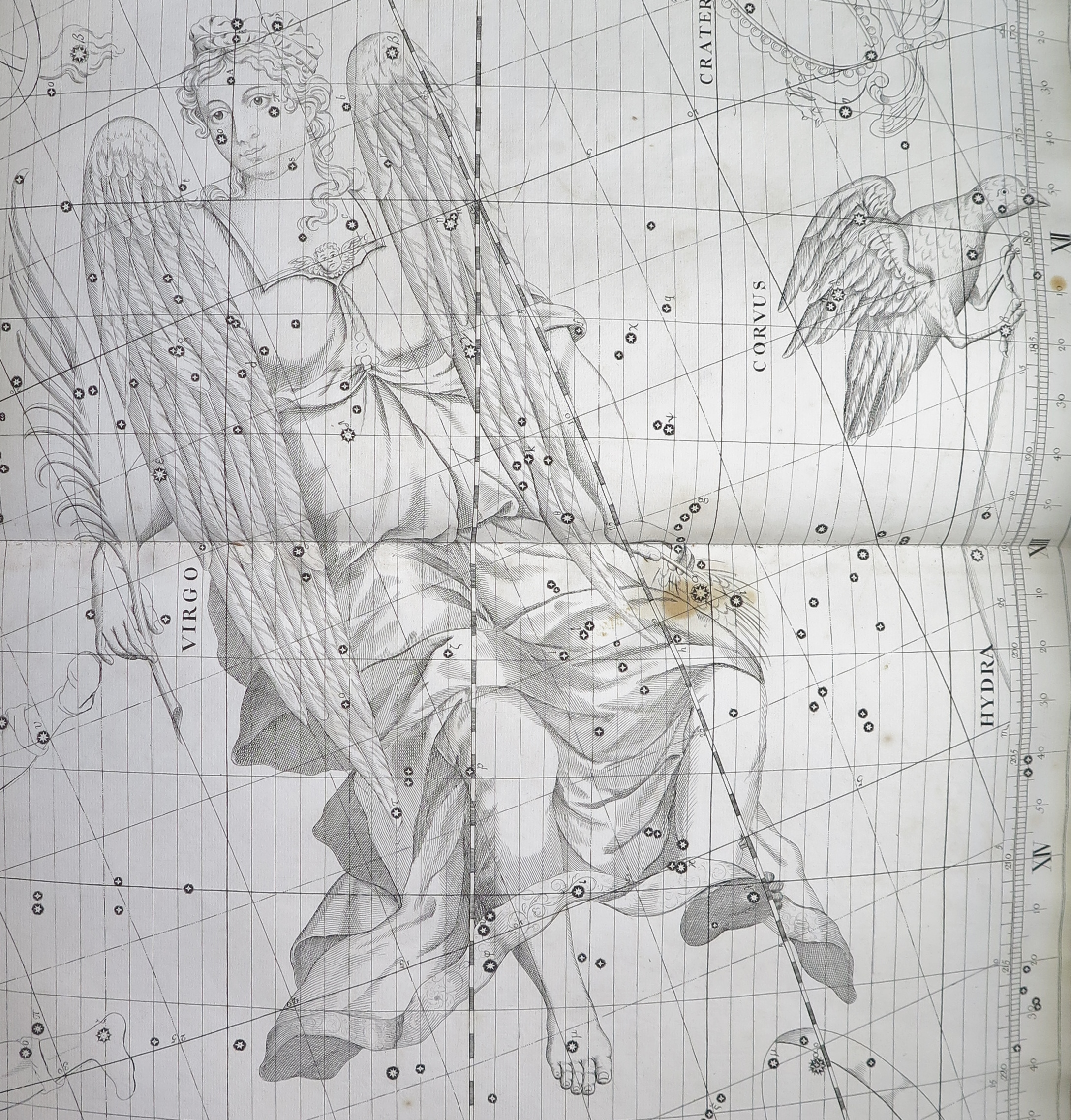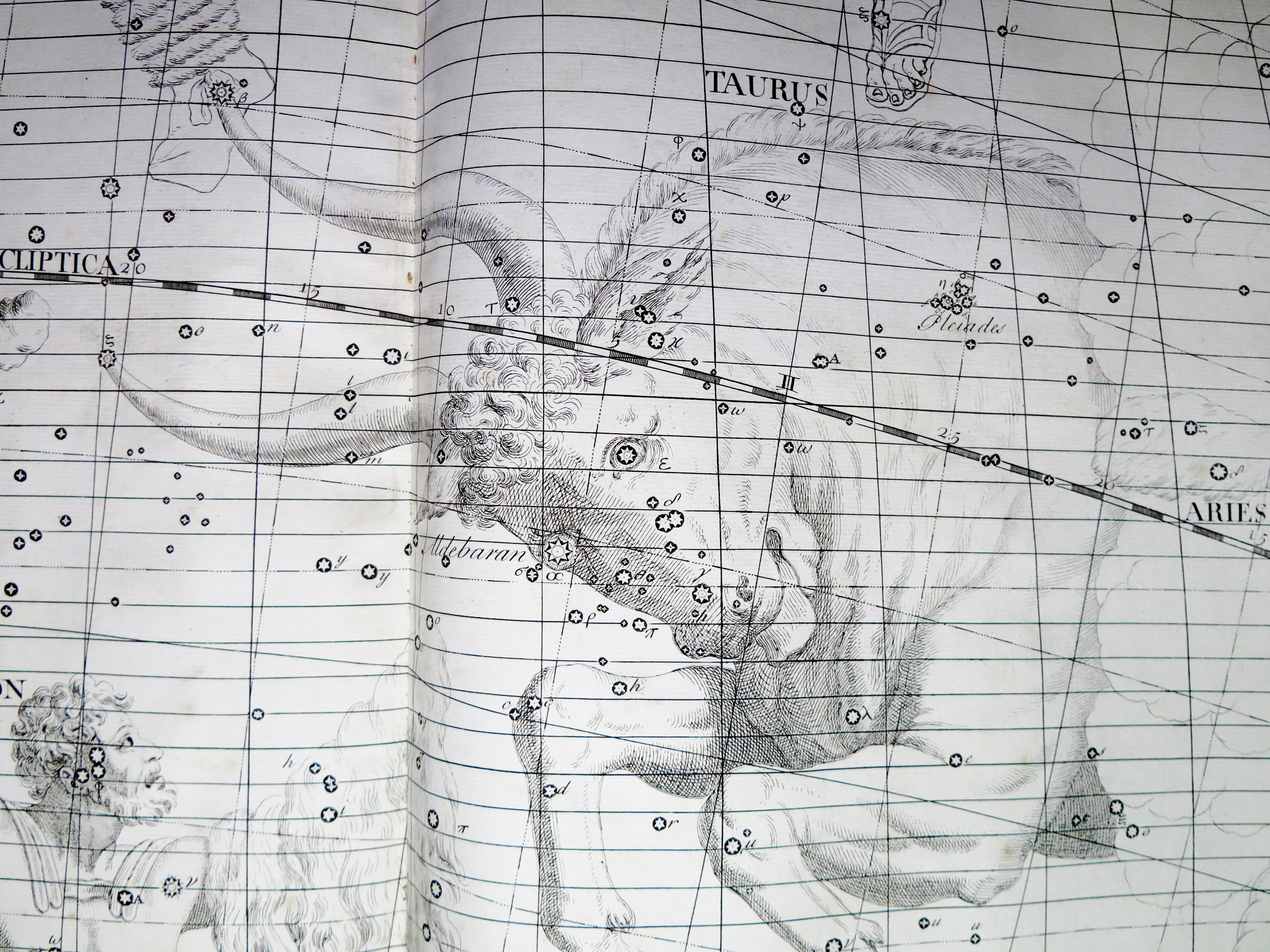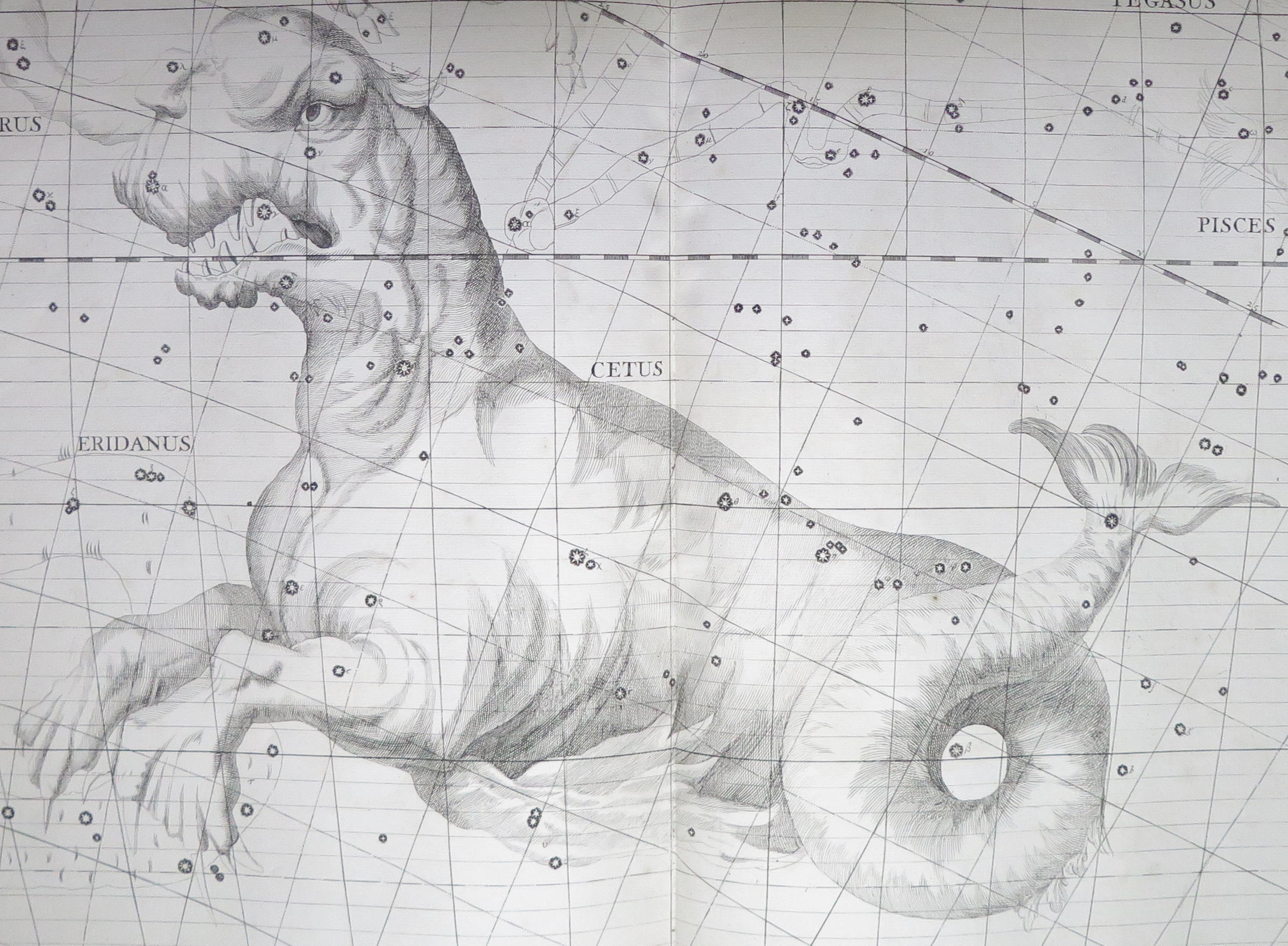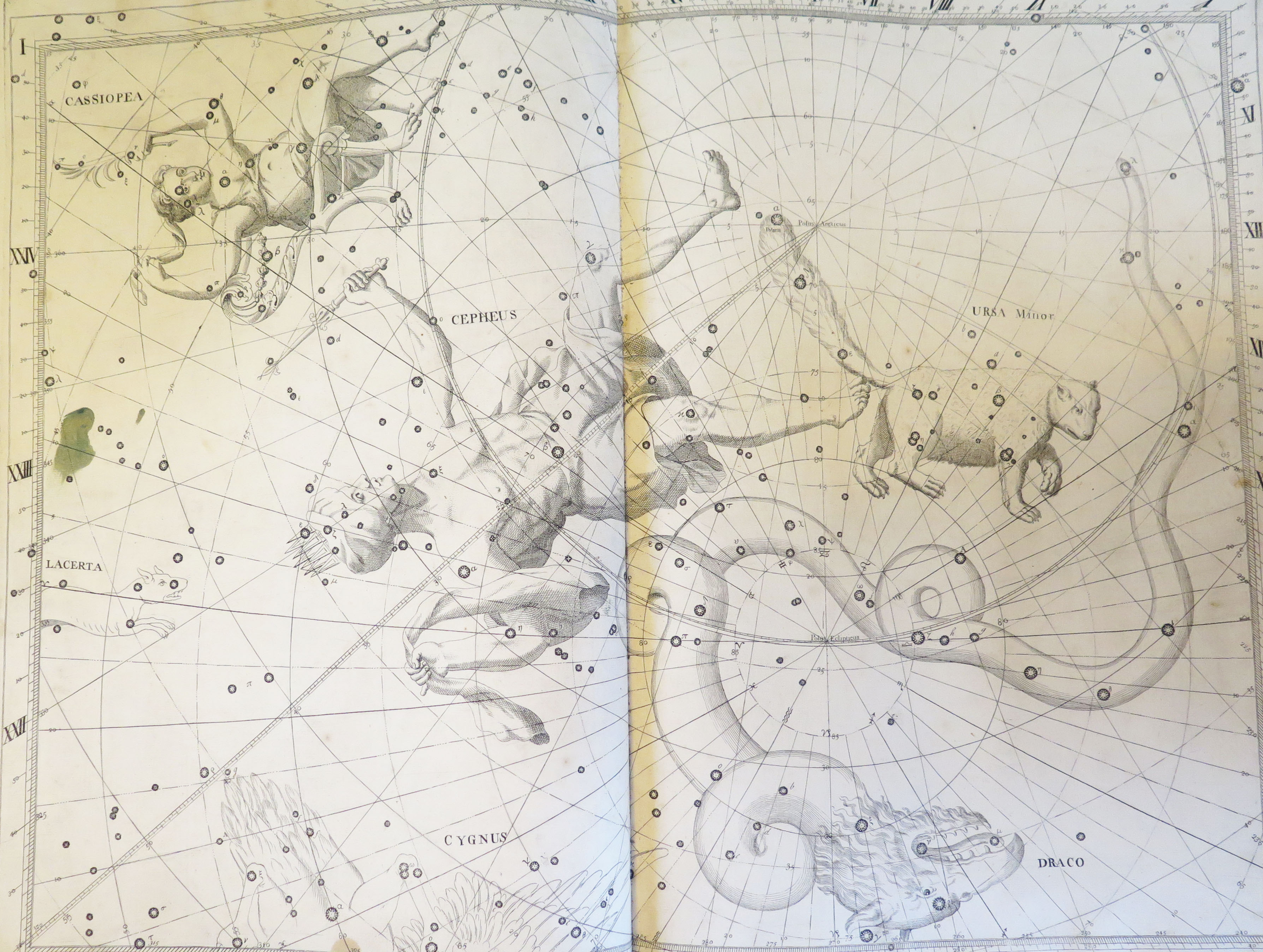John Flamsteed’s Atlas Coelestis: 300 years among the stars
Today we feature a guest blog from our Natasha MacMahon, who has been our Graduate Trainee Librarian this academic year.
The Library’s latest display spotlights an item from its special collections, John Flamsteed’s Atlas Coelestis.
Virgo
The Atlas Coelestis is a star atlas published in 1729 and created by John Flamsteed. It was the foremost star atlas for almost a century. “Pembroke-Hall Library” is listed among the subscribers and markings on certain pages suggest that it has been well-used over the years. Astronomy was a leading subject at Pembroke during the 18th century partly due to the influence of Roger Long, Astronomer and Master of the College between 1733 and 1770. What appears to be a page of corrected proofs from Roger Long’s Astronomy found within Pembroke’s Atlas Coelestis show that not only students but even the Master may have used the Library’s copy.
Taurus
The Atlas is the culmination of Flamsteed’s work as the first Astronomer Royal. He was appointed in 1675 by Charles II and helped to set up the Royal Observatory Greenwich. Flamsteed supplied most of the instruments that he used throughout his own career. Due to his reliance on these instruments, Flamsteed’s catalogue of the stars, the Historia Coelestis Britannica, was one of the most accurate at the time it was published and was highly sought after. The Atlas was created using the measurements published in his catalogue.
Cetus
John Flamsteed was born in Derby on 19th August 1646. He joined Jesus College, Cambridge in 1670 but before then most of his education had been self-directed. Flamsteed died on 31st December 1719, after a short illness. This year marks the 300th anniversary of his death.
Cepheus and Ursa Minor
